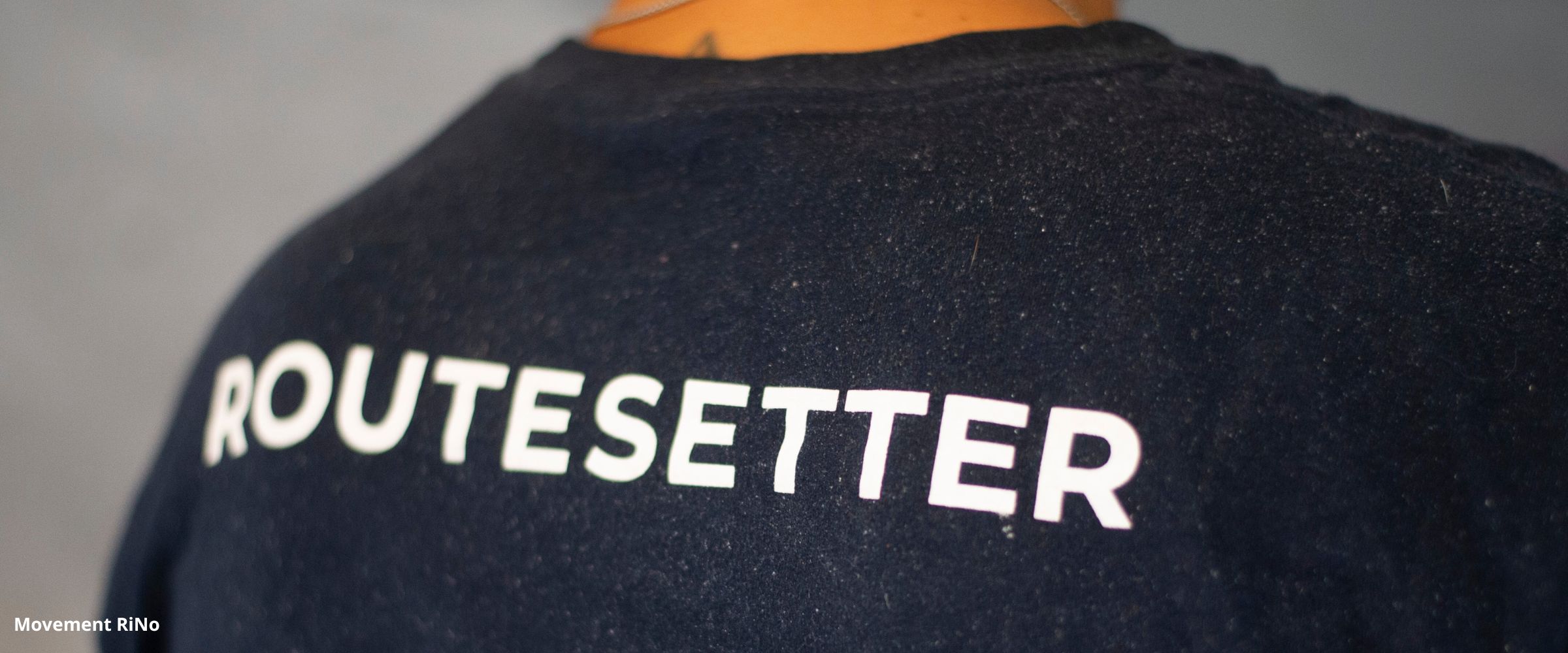How To Write A Routesetting Resume

As we learned from the CWA Summit, more routesetters are transitioning roles and switching companies than ever before. Whether it be for higher pay, better benefits, or to be closer to outdoor climbing, routesetters have limitless options to move considering we’re currently seeing gyms pop up in almost every area of the country.
Historically, the way a routesetter marketed themselves was purely by reputation. If you wanted to move gyms, you might just cold call the head setter, have a conversation about a potential opening, and boogie on over to the new gym.
The routesetting community has always been small and we’ve depended more on word of mouth than needing to see someone’s experience on paper. However, as the number of routesetters is continuing to grow in conjunction with the demand for a more professionalized lens, we have seen a shift in the way routesetters communicate their skills and experiences.
Resume has entered the chat.
Last summer I briefly discussed the importance of having your team update their resumes bi-annually and how to transfer routesetting skills to paper. Since then, I have received countless DMs on Instagram of routesetters asking for resume advice. I’ve also seen it become an expectation for a routesetter to include their resume when they are cold calling for a comp / guest setting opportunity. Even still, people are struggling to understand what is relevant to include, how it should be formatted, etc.
First, it’s important to consider why and to whom you are sending this resume to. If you are looking for a commercial setting position, it's not the most relevant to send a resume that only includes the competitions you’ve set.
On the flip side, if you’re applying to set an event, it's not the most relevant to list all of your commercial experiences. Suppose you’ve identified competition setting as being the track you’re pursuing. In that case, you will eventually have two separate resumes - one for commercial and one exclusively to use when applying for championship events.
But for this article, I’m using my own resume as a roadmap for what to include in an all-inclusive resume to send when applying for a commercial position or a local event.
Download a resume template inspired by this article!
NOTE: You will need Adobe Acrobat to edit the document.
Heading:
Who are you? What are your pronouns? Photos are definitely not a requirement, but I am always really psyched when someone includes them. The more thoughtful the resume, the more I can assume the applicant is going to be thoughtful and creative in their setting.
Competition History:
If you have set for any championship event, it should be listed first, even if it disrupts the format chronologically.
 |
|
An example of this section from the author's resume. |
For competitions, it is helpful to know what type of event it was (bouldering vs. sport), who chiefed the event (so the reader knows who to contact as a reference), and at what gym. If you were the chief, make sure to bold it so it stands out. If you worked in a competition even just as a forerunner, list it here.
Relevant Experience:
If you do not have any competition experience, use this section to list out any other relevant professional experience.
Some examples I've seen this year: youth team coaching, volume building at Vertical Solutions, involvement with Southeastern Climbing Coalition, etc. Head Routesetters want to hire team members who are involved in their community. Listing trail days or fundraising involvement indicates you will be a larger asset to the gym than just a person who sets.
I've also seen routesetters who were former youth athletes list the youth championship events they competed in. This lets the reader know the applicant understands the USAC system, even if they haven't set an event yet.
Profile:
In a profile, use this opportunity to talk about your climbing, why you like to routeset, your forerunning levels, etc.
Contact:
I cannot stress enough how important it is to list your contact information. Your resume is irrelevant if someone cannot follow up with you. If you are someone who frequently posts their sets on Instagram, include your handle.
Education:
One of the most frequent questions I get asked regarding resumes is "should I include my degree?" The short answer is, no, it's not super relevant. We all know that you don't need a college degree or even a high school diploma to be a high-level routesetter. However, when I receive a resume that lists a degree, especially a master's degree, it's an indicator that the applicant can commit to something and see it through.
On a personal level, I spent too many years and energy on that piece of paper to not throw it on my resume somewhere.
If you have earned any USA Climbing levels or have any SPI certifications - this is a good place to list them.
Clinics:
List all clinics! Even if you have only had an in-house professional development day, list it! Any indication of some specialized education is helpful for Head Setter to know. Just make sure to list the instructor.
"Other" section:
Every resume should have a section for random applicable experience that doesn't have a home. For me, I chose to use the space to highlight events I've set that were not USAC-sanctioned, but still indicated some chiefing experience. For others, maybe this is for listing an Opening set you did or your participation in a Setter Showdown.
 |
|
An example of this section from the author's resume. |
If you are struggling to come up with info for this section, I used to write which walls I had experience setting on (Vertical Solutions, RockWerx, Walltopia).
Experience installing pads? List it. Can you use an angle grinder? List it. Think of any information that could be relevant for a Head Setter to know before an interview or that ‘sets’ you apart from other routesetters.
One recent resume I received from Holly Chen, showed a really cool breakdown of her boulder styles instead of an "other" section (see below).
Final Thoughts:
How long? My personal rule is one page is best, and never go over two. There's absolutely no reason you should be sending out a four-page setting resume.
On references, I find it helpful to have three different people for different purposes:
- A setter who knows your abilities very well and has set with you on several different occasions. This might be a head routesetter, a competition chief, or maybe just one of your other setting team members.
- A setter who knows you well but is also well connected in the industry. This helps when you are applying somewhere where you might not know anyone; but you have a mutual contact who can vouch for your level of experience (think 7 degrees of Kevin Bacon). Our industry is still small enough where almost everyone should have a contact like this.
- Wildcard. Here you can list an additional chief, someone else you've worked closely with, or perhaps an instructor who worked closely with you during a clinic. Make sure to ask and notify all references that you have listed on your resume.
- Some routesetters panic at the thought of making a resume because they've been conditioned to believe it's some sterile piece of paper that uses vocabulary that we as setters probably never use on a day-to-day basis.
Forget what you believe a traditional resume should look like and focus on the best way to present yourself and have fun with it!
For formatting, it is always best to send a PDF version of whatever file you create. If you want to get creative with your visuals, I highly recommend the free version of Canva.com. If you want to go more basic, google docs has some options you can explore. Whatever you decide to use, just make sure you can access it easily so you can continue to update after every event, certification, etc., you want to add.
If you have any additional questions on routesetting resumes or would like personalized feedback on your draft, feel free to email me or find me on Instagram!
About the Author
 Hayley Moran is the Head Routesetter at The Crag in Nashville, Tennessee. She has a Master’s Degree in Child and Family Studies and previously worked in the field of public health with a focus on health equity. She uses those experiences to help guide her work in the climbing industry by creating events and discussions that promote diversity, equity, and inclusion through the sport of rock climbing. When she is not on the wall, you can find Hayley baking in the kitchen, designing silly sweatshirts, or hanging out with her cat, Goblin.
Hayley Moran is the Head Routesetter at The Crag in Nashville, Tennessee. She has a Master’s Degree in Child and Family Studies and previously worked in the field of public health with a focus on health equity. She uses those experiences to help guide her work in the climbing industry by creating events and discussions that promote diversity, equity, and inclusion through the sport of rock climbing. When she is not on the wall, you can find Hayley baking in the kitchen, designing silly sweatshirts, or hanging out with her cat, Goblin.
